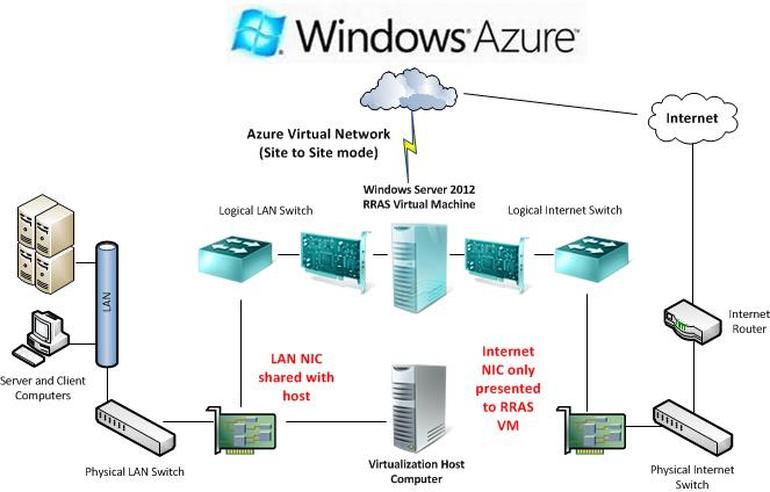Stay Connected With Azure Networking
Sure, Microsoft’s Azure hybrid cloud solution offers a bevy of resources for businesses of all sizes. But getting these resources to communicate with one another could be challenging to even the most expert cloud-computing users. Azure provides a variety of networking capabilities that can be used together or separately. Connectivity between Azure resources allows you to connect Azure resources together in a secure, private virtual network in the cloud. Internet connectivity allows you to communicate to and from Azure resources over the Internet. Azure Networking allows organizations to stay connected.

Users can connect an on-premises network to Azure resources through a virtual private network over the Internet or through a dedicated connection to Azure. Load balancing and traffic direction, lets you balance traffic to servers in different locations. For security, you can filter network traffic between network traffic between network subnets or individual virtual machines. And for routing, you can use default routing or fully control routing between your Azure and on-premises resources. You can monitor and manage your Azure networking resources simply through its networking capabilities, and you can use a web-based portal or cross-platform command-line tools to deploy and configure network resources.
Azure resources such as Virtual Machines, Cloud Services, Virtual Machines Scale Sets and Azure App Service Environments can communicate privately with each other through an Azure Virtual Network (VNet). A VNet is a logical isolation of the Azure cloud dedicated to your subscription. You can implement multiple VNets within each Azure subscription and Azure region. Each VNet is isolated from other VNets.
All Azure resources connected to a VNet have outbound connectivity to the Internet by default. The private IP address of the resource is source network address translated (SNAT) to a public IP address by the Azure infrastructure. To communicate inbound to Azure resources from the Internet, or to communicate outbound to the Internet without SNAT, a resource must be assigned a public IP address. You can access resources in your VNET securely over either a VPN connection or a direct private connection. To send network traffic between your Azure virtual network and you on-premises network, you must create a virtual networking gateway.
Microsoft Azure also provides multiple services for managing how network traffic is distributed and load balanced. The Azure Traffic Manager service provides global DNS load balancing. Traffic Manager responds to clients with the IP address of a healthy endpoint based on geographic, performance, priority and weighted round-robin methods. Azure Application Gateway offers various Layer 7 load-balancing capabilities for your applications, including a web application firewall to protect your web applications from vulnerabilities and exploits. The Azure Load Balancer provides high-performance, low-latency Layer 4 load-balancing for all UDP and TCP protocol.
For security, you can filter traffic to and from Azure using the network security groups or through Application Gateway. Azure also creates default route tables that enable resources connected to any subnet in any VNet to communicate with each other. To best manage your Azure networking, the solution provides activity logs, diagnostic logs, metrics, troubleshooting, role-based access control, packet capture, verified IP flows, troubleshoot VPN connectivity and views of network topology.
You don’t have to stay disconnected in your Azure journey anymore. 2W Tech has IT Consultants on staff that are Microsoft Certified experts who can guide you through your Azure cloud deployment and subsequent implementation of its networking options. Contact us today to learn more about Microsoft Azure.
Read More:
Manufacturing Adoption of IoT
Epicor’s Real-Time ERP Analytics
Microsoft Azure Security, Privacy and Compliance
Interested in reading this article? Click the button below to download this asset.
Download “Microsoft Azure Security, Privacy and Compliance” Now
Microsoft Azure Security, Privacy and Compliance
Please complete the form to download the file.